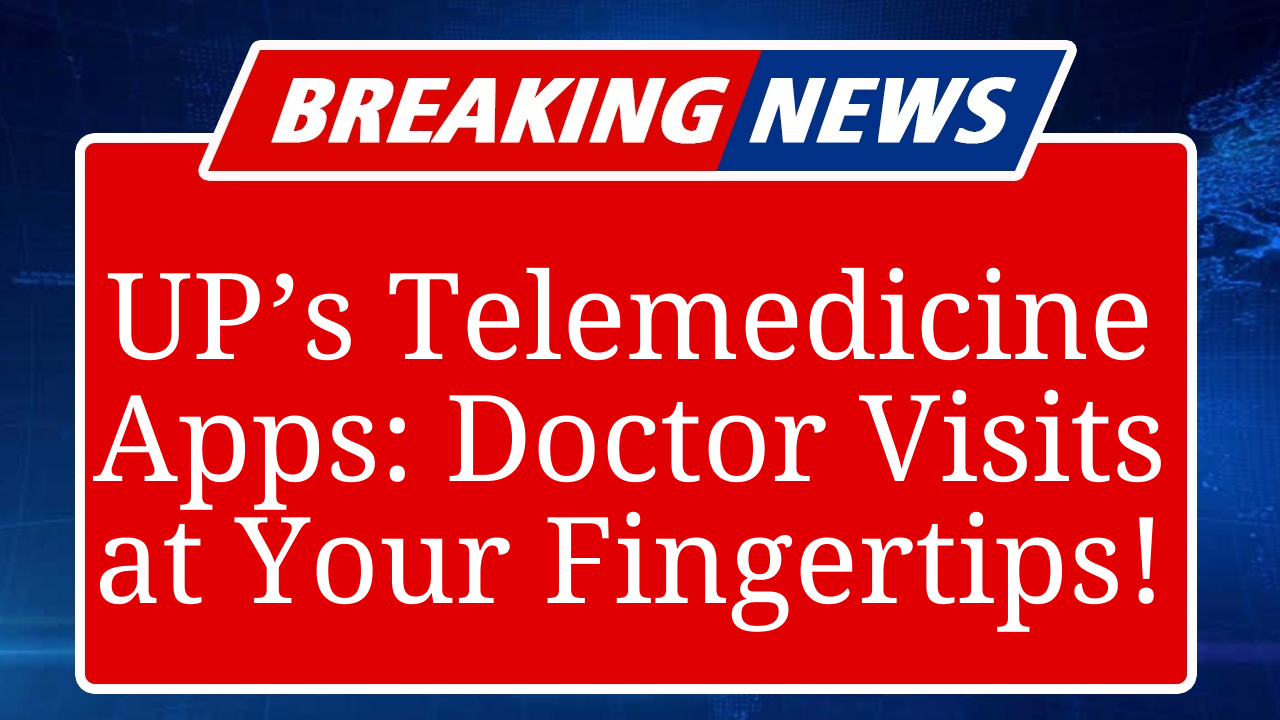Uttar Pradesh is embracing telemedicine, revolutionizing healthcare access through apps like Practo, Tata 1mg, and mFine. These platforms offer virtual consultations, e-prescriptions, and diagnostics, bridging gaps for rural patients. With rising smartphone penetration and supportive policies, UP’s telemedicine market is booming, enhancing affordability and convenience. However, challenges like connectivity and awareness persist, requiring innovative solutions to ensure widespread adoption.
UP’s Telemedicine Boom: Connecting Patients and Doctors Digitally
Uttar Pradesh (UP), India’s most populous state, is witnessing a transformative shift in healthcare delivery through telemedicine apps. Platforms like Practo, Tata 1mg, mFine, PharmEasy, and MediBuddy are redefining how residents access medical consultations, particularly in underserved rural areas. As of 2025, the telemedicine market in India is projected to grow at a CAGR of 24.1%, with UP emerging as a key hub due to its vast population and increasing smartphone penetration, which reached 65% in rural areas by mid-2025, according to TRAI data.
These apps enable patients to consult board-certified doctors via video or audio calls, access e-prescriptions, and order diagnostics or medicines online. Practo, a Bengaluru-based platform, operates in over 100 UP cities, offering consultations starting at ₹950 and a medical directory with over 1 lakh doctors. Tata 1mg, with a 4.7 App Store rating, provides same-day medicine delivery across 1,000+ cities, including Lucknow and Kanpur, alongside consultations with specialists like dermatologists and cardiologists. mFine, rated 4.6 on Google Play, integrates AI-based symptom checkers, enhancing diagnostic accuracy for chronic conditions like diabetes.
The state government’s push for digital health aligns with these advancements. In 2024, UP’s Health Department launched teleconsultation services in 1,200 primary health centers, serving over 5 million patients by August 2025, per official reports. The National Health Mission’s e-Sanjeevani platform has facilitated 2.3 million consultations in UP since 2020, with 60% from rural areas. This reflects telemedicine’s role in reducing travel costs and wait times, critical for a state where 70% of the population resides in rural regions with limited access to specialists.
However, challenges persist. Poor internet connectivity in remote areas hampers video consultations, with 30% of rural UP facing inconsistent 4G coverage, as per a 2025 IAMAI report. Awareness remains low, with only 45% of UP’s rural population aware of telemedicine services, according to a Public Health Institute survey. Additionally, reimbursement policies for telemedicine under Ayushman Bharat are inconsistent, limiting adoption among private providers.
Innovative solutions are emerging to address these hurdles. Apps like PharmEasy offer offline consultation booking, allowing patients to schedule calls via SMS in low-connectivity areas. MediBuddy’s ₹1,999 annual plan provides unlimited consultations, making healthcare affordable for families. AI-driven features, such as mFine’s symptom evaluator, help bridge diagnostic gaps where specialists are scarce. UP’s government is also partnering with telecom providers to enhance 4G infrastructure, targeting 80% rural coverage by 2026.
The rise of telemedicine apps has empowered patients, particularly women and the elderly, who face mobility constraints. For instance, Tata 1mg’s Health Locker allows users to store medical records digitally, ensuring continuity of care. Meanwhile, Practo’s partnerships with 9,000 hospitals enable seamless appointment bookings, reducing the need for in-person visits. These platforms also support Hindi and regional languages, catering to UP’s diverse linguistic landscape.
Despite the progress, experts urge greater public awareness campaigns and policy reforms to maximize telemedicine’s potential. With UP’s healthcare infrastructure under strain—only 1 doctor per 1,450 people compared to WHO’s recommended 1:1,000—telemedicine apps are a critical tool to bridge gaps, ensuring timely, cost-effective care for millions.
Disclaimer: This article is based on recent reports, official government data, and industry insights from sources like TRAI, IAMAI, and the Public Health Institute. Information is accurate as of September 2025 and subject to change. Always consult healthcare professionals for medical advice.

